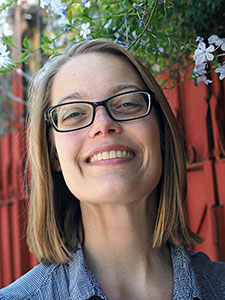Uranium isotope ratios: a proxy to understand carbon burial in varying redox environments in Ocean Anoxic Event 2
Abstract
Increases in carbon burial (productivity) or expansion of ocean anoxia can be predicted by the occurrence of organic-rich sediments. In the sediments, uranium (U) concentration is tightly linked to carbon burial rates; on the other hand, U isotope ratios are often interpreted as an environmental redox proxy, ignoring the sedimentary geochemistry. The use of U concentration and isotope ratios is therefore inconsistent. In order to clarify the application of the U isotope proxy, I plan to study cores from the proto-North Atlantic during the Ocean Anoxic Event 2, a period of widespread organic-rich sediment deposition and variable redox conditions.
Biography
Growing up in Northern Maine, I enjoyed being outside with nature, but when snowstorms hit I would reach out to history books. At Bowdoin College, I studied geology and art history, which allowed me to appreciate their overlap in learning the past of earth and people, and also how chemistry can be applied in both disciplines. At Rutgers, I enjoy working on a variety of projects that observe different geological times and contexts – from samples I collected recently in the Black Sea to samples from the Cretaceous that are part of this project. Working with Dr. Silke Severmann, I am utilizing uranium and uranium isotopes to understand the processes impacting their preservation in the sediments and testing my hypotheses in a variety of geological settings.







